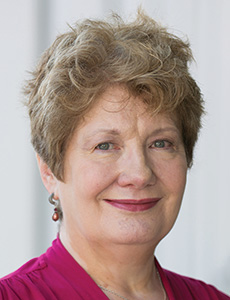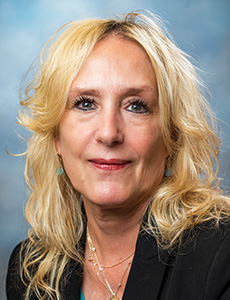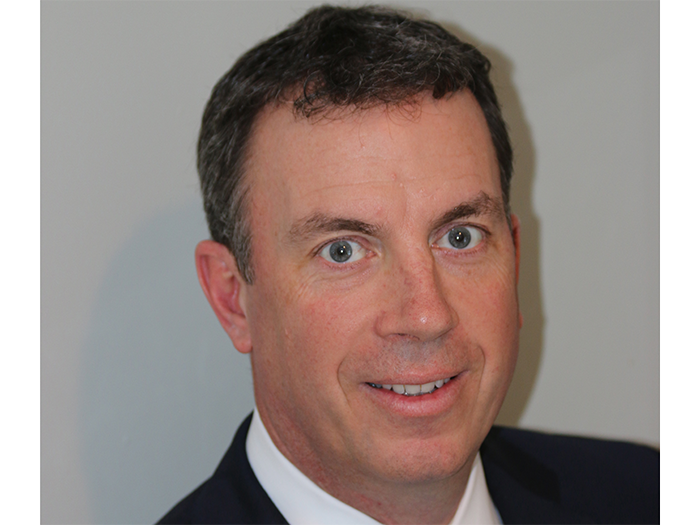These Teddy Award Winners Agree: It’s Vital to Keep Employee Wellness at the Center of “Everything”

For quite some time, leadership across industries has recognized that the health and wellness of their employees is imperative for their companies to simply function, let alone succeed.
Studies by Gallup and The Journal of Occupational and Environmental Medicine have shown that companies that have invested in employee wellness programs have seen greater profitability, lower rates of turnover, and improved customer service rates.
So, the returns on investment from wellness initiatives have been and continue to be proven.
But with COVID having rattled nearly every facet on the economy, people are re-evaluating what really matters to them.
And this – as found in recent McKinsey research on what is being called “The Great Attrition” – has led to a significant part of the workforce deciding to opt-out of traditional work, regardless of how much they were making, and the perks and benefits offered by their employers.
Because employees are “tired, and many are grieving,” as the McKinsey report showed, 40% of employees are likely to leave their current jobs in the next 3-6 months.
Digging Deeper into Wellness Could Help
Digging deeper into employee wellbeing could help organizations retain the staff they have, and even become more attractive to new and former employees.
With workers looking for “meaningful—though not necessarily in-person—interactions, not just transactions,” as the McKinsey report noted, employers have the opportunity to go a step beyond wellness and explore what it will take to promote wellbeing among their employees.
Anne-Marie Amiel, risk manager for Columbus Consolidated Government in Georgia and 2015 Teddy Award winner, has found that keeping staff strong, focused and engaged comes down to having a solid health and wellness framework in place and creating a culture that places morale front and center.
And from there, she said, “think laterally”.
“Really, one of the things that I think is most important is to be lateral thinkers, and to come at it through a lot of different directions,” Amiel said.
Wellness Is All Encompassing
For nine years, Amiel has made it her mission to bring a comprehensive perspective on wellness to Columbus.
“Wellness, to me, is all encompassing.”
“It’s physical; it’s emotional; it’s mental; it’s psychological. It’s looking at the whole person and their environment and everything about their daily tasks.”
For some organizations, setting up an Employee Assistance Program (EAP) may constitute addressing employee wellness. “It’s that plus a lot more,” Amiel said.
“It’s encouraging employees to be engaged in the whole process at work. It’s encouraging their ideas. It’s encouraging their education, to advance in their careers. It’s finding ways of giving them that opportunity.”
In addition to successfully reconfiguring the government’s workers’ compensation, liability claims and safety programs in Columbus, to emphasize that the government cares for its workers, Amiel and her colleagues have prioritized career advancement for their employees.
By providing in-house leadership advancement programs for staff and career development conferences for workers in their Field Force – who are among the lowest paid workers, taking care of garbage collection, for example – Amiel and team have encouraged staff to stay and grow their careers within the city-county, rather than leaving all together.
As Amiel said, “All of this encourages people to stay, who realize that they can have a career rather than just a job. And all of that increases their engagement, increases their psychological and physical health.”
Certainly, Amiel noted, some staff have left for better job offers elsewhere, but this is no surprise as cities typically have high rates of turnover in certain departments.
Despite the extra challenges presented by COVID, Columbus has not seen an uptick in turnover rates or workers’ comp claim volumes since the onset of the pandemic. The workforce has remained steady.
Focus on Morale
As rates of isolation, depression, and anxiety – especially among people who work remotely – have soared since the onset of the pandemic, Amiel has found that supporting employee wellbeing includes finding ways of “keeping all the employees engaged with each other.”
“I think it’s the responsibility of people at a higher level, in any organization, to put their thinking caps on and to come up with ways of making not only themselves but everybody else feel better.”
And this has been among Amiel’s priorities for nearly a decade.
Keeping up employee morale of such a front-facing entity as city government has been no simple endeavor. As she said, “The work we do is always considered essential, but it’s very rarely appreciated.”
“Public employees, particularly local government employees, get screamed at and cursed out a lot,” Amield said, “so, one of the things that I wanted to do when I came here was try to figure out a way of keeping morale up.”
Maintaining Emotional Health without a High Cost
The cost of fostering wellness and wellbeing in the workplace need not be excessive. From the budget-conscious perspective, the public sector is a great place to look for programs that are mindful of cost and outcomes as cities and counties typically have limited budgets.
“We have been able to be creative enough to help employees stay emotionally healthy, and it really has not been a high cost on top of the cost that any employer already puts out.”
To keep employees connected, Columbus has relied upon a strong information and technology (IT) infrastructure that it had already put in place prior to onset of the pandemic.
With an increased volume of inquiries and phone calls from citizens due to COVID, unable to close its offices, Columbus rotated staff as much as possible, allowing some staff to work remotely and partly in the offices. This enabled the city to keep social distancing in effect even with citizens having access to their offices.
Making phone calls has been a key part of keeping staff in Columbus engaged as well.
Amiel has found that simply designating members of the team to call other employees who were injured, on family leave, or unable to work in-person with other colleagues, “so that they still felt engaged and still felt as though they were valuable,” has helped keep morale up as well.
And as Amiel said, “that doesn’t cost a penny.”
Columbus has also made a point to maintain as many of their holiday celebrations for employees as possible – even from a distance. Instead of holding holiday potluck parties as was tradition prior to the pandemic, the parties were taken online.
By making holiday lunch boxes available for pickup and using online platforms to play virtual games, Columbus was able to continue its efforts to keep up the morale of employees – especially during the holidays when feelings of isolation often increase.
Receiving a friendly phone call and a holiday meal can make a difference. As the recent Gallup report, The Wellbeing-Engagement Paradox of 2020, recently noted, “We are navigating a constant state of new challenges while grappling with unknowns about the future,” and “some employees have been affected more adversely than others.”
This is where Amiel’s recommendation for leaders to think laterally can really come into play.
“What, anybody can really do is look at themselves and think, what would make me feel better. And if you think of what would make you feel better, it probably applies to most of the rest of the population,” Amiel said.
Welcoming Talent Back
Even though the McKinsey attrition research showed nearly half of surveyed looking to leave their current jobs, some organizations, like Saint Peter’s Healthcare System in New Brunswick, NJ are welcoming former workers back.
The investments made in employee health and wellbeing could be part of the reason why.
“What we have seen in Employee Health, especially as of late, is employees that had left Saint Peter’s, they’re coming back,” Linda Vance, manager of employee health at Saint Peter’s said.
Even with health care being the hardest hit sector of the global economy during the pandemic, Vance said, “We see everybody on their way back in, and we’re seeing that noticeably.”
Employee satisfaction at the New Jersey health care provider is at an all-time high thanks to overhaul of Saint Peter’s employee health and wellness and safety approach that began in 2016.
Vance was among the Saint Peter’s leaders spearheading the changes. “When I first started here, our wellness program really was very meager,” Vance said.
The health care system’s wellness approach has vastly changed since 2016. This year, Saint Peter’s was recognized with a Clinical Healthy Work Environment Award by Sigma Theta Tau, an organization that acknowledges global nursing excellence as well as the Teddy Award for its commitment to revamp culture of health.
Saint Peter’s approach toward employee wellbeing now includes a branded employee wellness campaign called “Go4Wellness,” and the usage of the Virgin Pulse wellness platform where employees can socially engage around fitness and participate in collegial challenges.
Saint Peter’s has also invested in a state of-the-art safety and loss prevention program that has led to a reduction in employee injuries by 58% in four years. Its updated claims and disability management program has also resulted in over $1.9 million in medical bill savings since 2016.
Vance and Michelle Lazzarotti, senior director of marketing, said that Saint Peter’s emphasis on listening to staff has been the key to the success of all of the advancements the organization has made over the past five years.
“One of the things we did initially, right from the beginning, when we started forming this really comprehensive wellness committee, was we brought in employees from all over the hospital – and all kinds of jobs – and asked them what did they want; what would be of value to them,” Vance said.
“We went right to the people that work here and got their input, and, and then built on that.”
In for the Long Haul
The care and support Saint Peter’s has provided to staff who were COVID positive and have experienced long-term symptoms has demonstrated its commitment to its employees and patients.
By quickly responding to the needs of recovering COVID patients and staff, “We started a COVID-19 recovery program [that] provides access to individuals who are experiencing long term symptoms,” said Lazzarotti, referring to the “long haulers”
“We provide access to care, whether it’s a pulmonologist or a neurologist, whatever the symptom is that that individual is experiencing, we provide access to the specialist.”
The program addresses the “full picture” of patient care. Led by a team of primary care physicians and pulmonologists, the program includes referrals to physical, occupational and speech therapy to improve lost stamina and endurance; neuropsychology to address “brain fog”; and a partnership with Rutgers Behavioral Health COVID Connect line for mental health support.
As of June of this year, the program had reached over 1,000 patients, including Saint Peter’s employees with patients reporting recovery from 50% or more of their symptoms.
Creating a Culture that Makes People Want to Stay
Organizations looking to succeed and thrive out of the pandemic should invest time and brain power in creating and maintaining environments that attract people looking to create value with their work.
What constitutes “meaningful” work for each person is subjective. But, as Jim Purcell, former CEO of Blue Cross & Blue Shield of Rhode Island and founder of Returns on Wellbeing Institute, pointed out at CNBC’s 2019 @Work Summit, “You don’t make people healthier. You get them to a spot to facilitate a very personal decision, and you do that through your culture.”
And hopefully, an emphasis on creating company cultures that foster wellbeing will lead to more organizations being part of “The Great Attraction” rather than “The Great Attrition.” &












